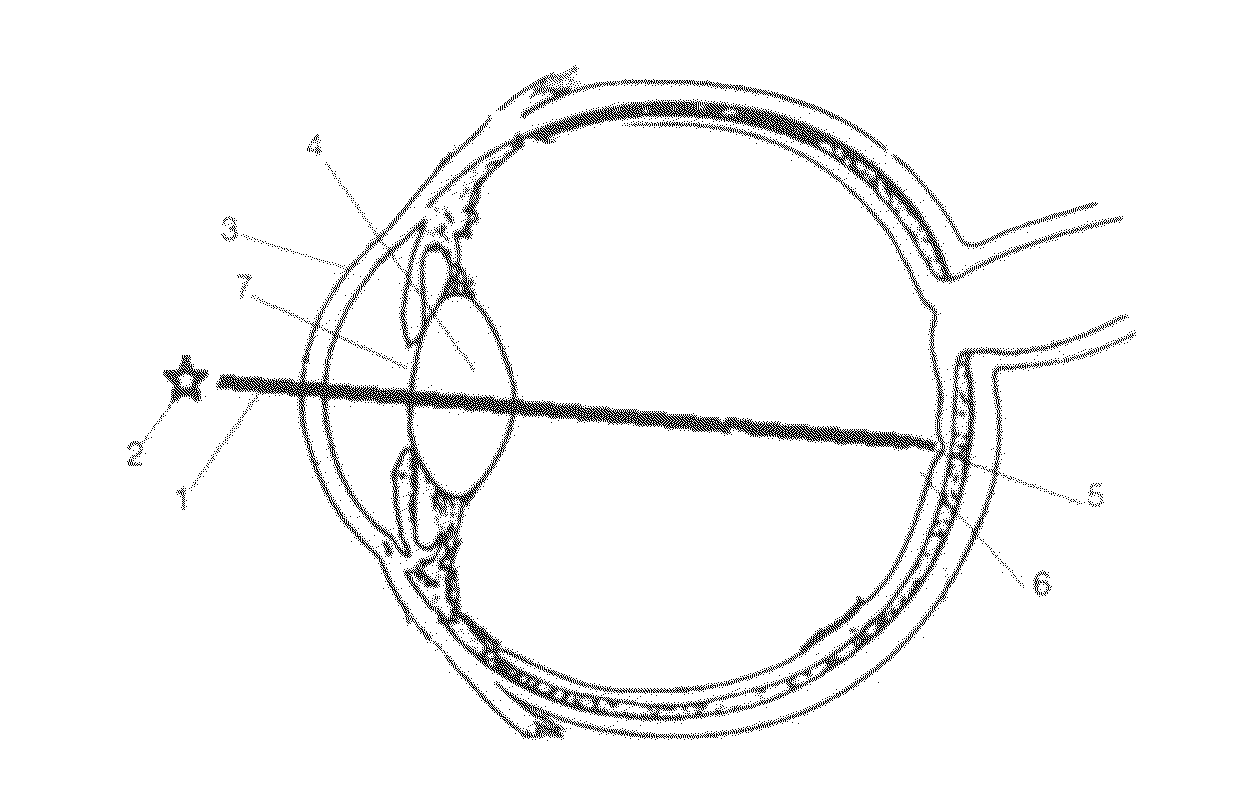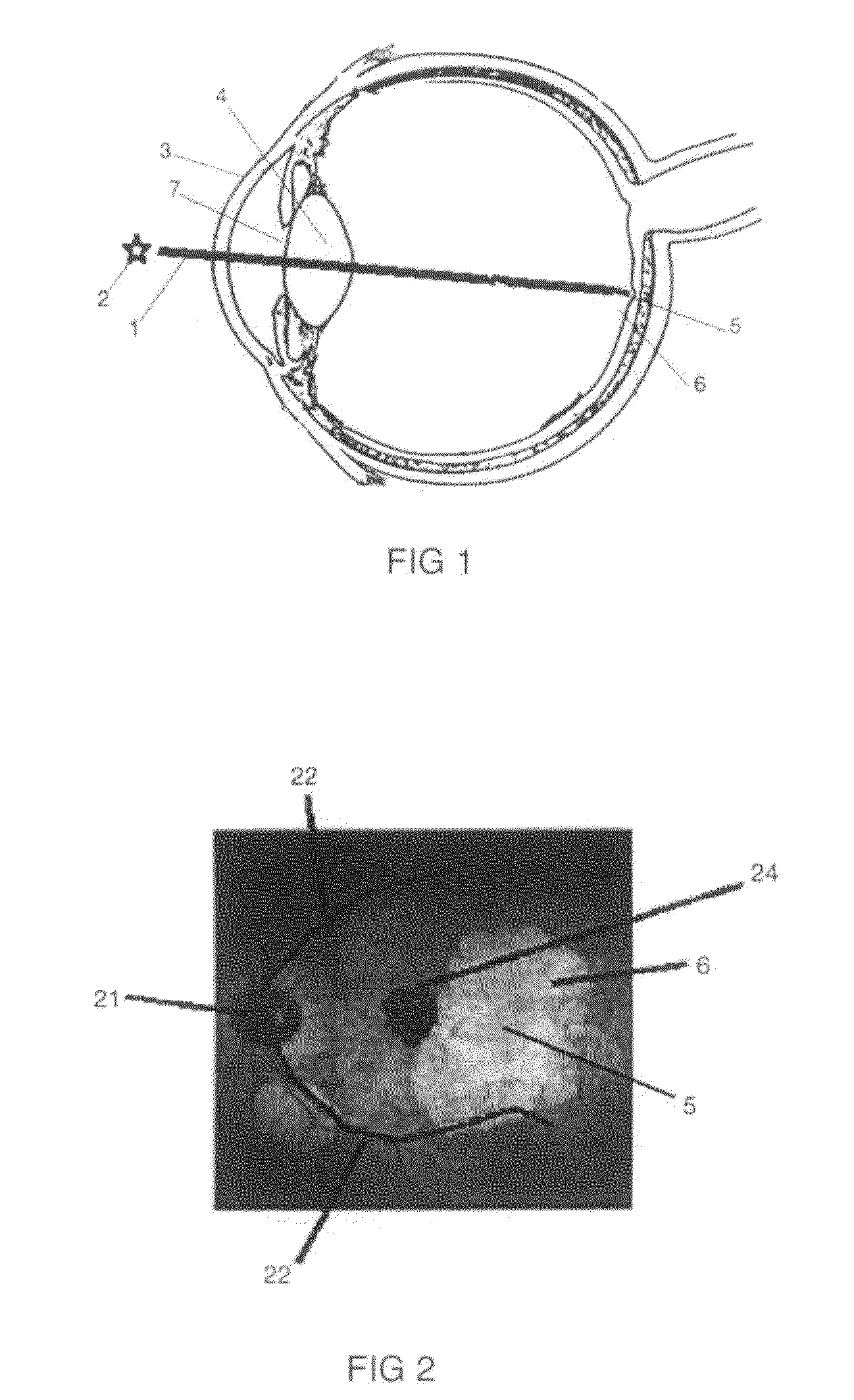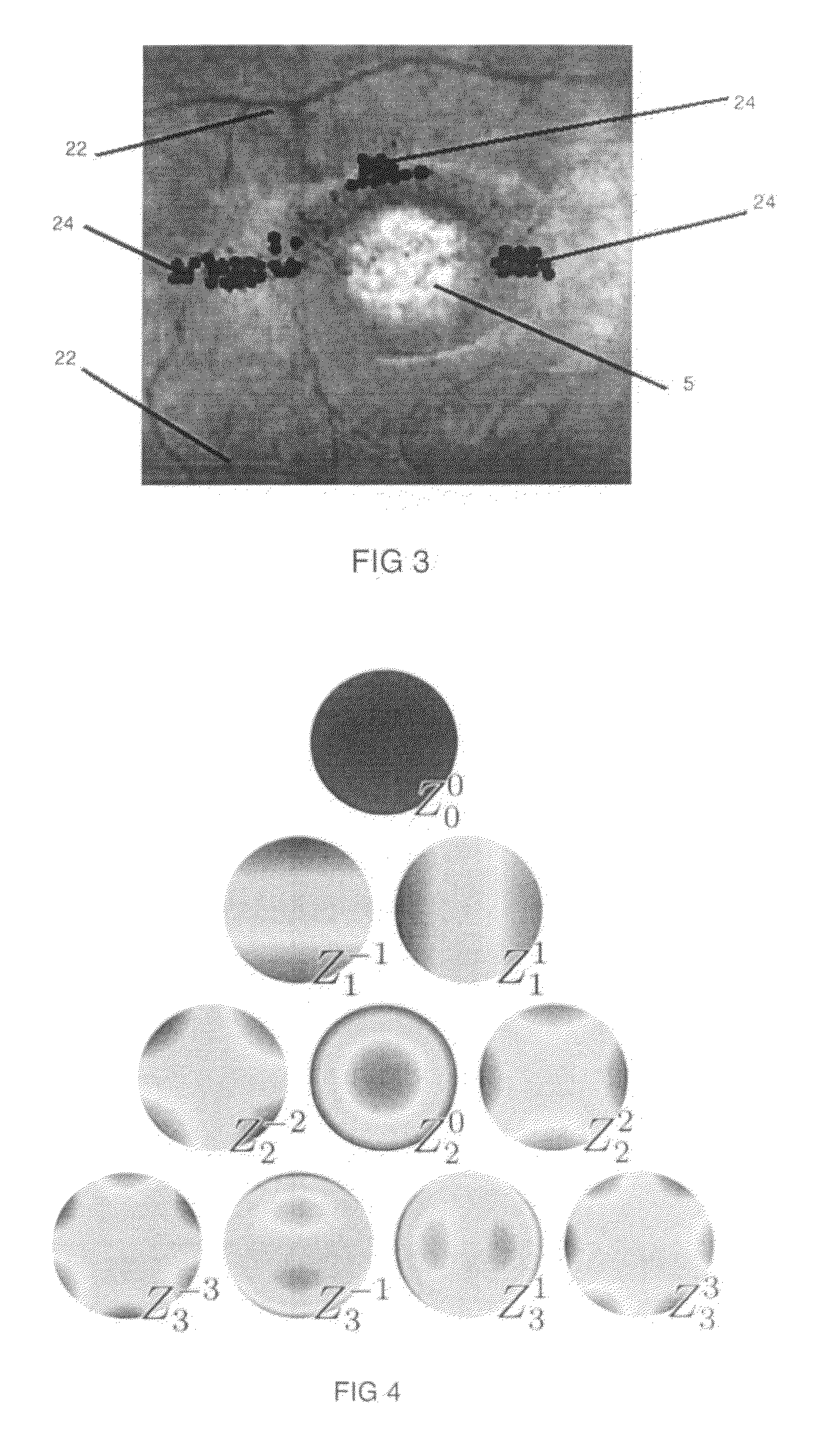Apparatus and Corneal Remodeling Methods to Improve Vision in Macular Disease
a corneal and macular disease technology, applied in the field of corneal remodeling and applicator remodeling, can solve the problems of no known cause or effective treatment of dry amd, progressive loss of central vision, and loss of function, and achieve the effect of improving vision and being easy to remov
- Summary
- Abstract
- Description
- Claims
- Application Information
AI Technical Summary
Benefits of technology
Problems solved by technology
Method used
Image
Examples
example 1
[0049]A patient with macular degeneration and best corrected vision of 20 / 400 in the right eye with no reading vision (less than Jaeger 10 meaning he could not read even the largest print) underwent a four spot treatment with a thulium laser at a power of 46 millijoules per spot. The four spots were equidistant from each other at the corners of a square 6 mm×6 mm in size. Rather than centering the square with the pupil in the center, it was decentered laterally on the cornea by 4 mm as shown in FIG. 6c. The iTrace showing the pre and post operative retinal spot diagram shows the ray tracing pattern of light from the image upon the retina is seen in FIG. 7. The grid in the figure is 1 mm×1 mm of the patient's retina centered on the fovea. Each box represents 10 arc minutes or 0.16 mm of the retina. It should be noted that the typical fovea is only 0.3 mm in diameter so that any ray tracings outside of the central 4 boxes is outside the fovea where PRLs may exist. The preoperative tra...
example 2
[0050]A female patient with early AMD had best corrected vision of 20 / 200 but could read only Jaeger 10 size print. She underwent the exact same procedure as in Example 1. Her ray tracings are shown in FIG. 8. Her preoperative image on the left side of FIG. 8 subtended only 0.1 mm×0.16 mm precisely on her fovea. It appears smaller than the preoperative image of Example 1 because he had preoperative myopia and optical aberrations of 0.45 microns which spread the image out. Her preoperative total optical aberrations were only 0.12 microns which included astigmatism of 0.1 microns, coma of 0.01 microns and trefoil of 0.01 microns and no contribution from myopia or hyperopia. Post operatively, her ray tracing on the right of FIG. 8 had expanded to 0.3 mm×0.3 mm and had spread both vertically and horizontally to just beyond the edge of the fovea, where the potential acuity is almost as good as in the fovea. She did indeed achieve her potential acuity, improving to 20 / 50 vision and Jaeger...
example 3
[0051]In this woman with geographic atrophy of the macula which had destroyed her fovea and much of the macula, only a PRL more than 0.5 mm above the fovea could be detected by preoperative microperimetry (Centerview Inc, San Jose, Calif.). In order to spread the image that far above the fovea, a 4 spot pattern with the thulium laser using 48 mJ of power was decentered such that one spot was directly on the visual axis, upon the pupil center as shown in FIG. 6d. The preoperative best corrected vision was 20 / 800 and near vision was less than Jaeger 10. The post operative vision improved to 20 / 200 and she could read Jaeger 8 size print. The ray tracing in FIG. 9 explains this dramatic improvement. Pre operatively the image subtended 0.2 mm in the fovea of the retina as seen on the left side of FIG. 9, while post operatively it had spread to 0.6 mm×0.8 mm in size, with the image hitting her PRL between 0.5 and 0.6 mm above her fovea. This was accomplished by increasing her total optica...
PUM
 Login to View More
Login to View More Abstract
Description
Claims
Application Information
 Login to View More
Login to View More - R&D
- Intellectual Property
- Life Sciences
- Materials
- Tech Scout
- Unparalleled Data Quality
- Higher Quality Content
- 60% Fewer Hallucinations
Browse by: Latest US Patents, China's latest patents, Technical Efficacy Thesaurus, Application Domain, Technology Topic, Popular Technical Reports.
© 2025 PatSnap. All rights reserved.Legal|Privacy policy|Modern Slavery Act Transparency Statement|Sitemap|About US| Contact US: help@patsnap.com



